It was a tough year for most intermediaries, investment bankers, strategic buyers, and private equity in the 2023 US M&A market. The deal flow was way down. Though it had not fallen as low as it had during its lowest point in 2020, deal flow fell 34% year-over-year. The main reason is that the Federal Reserve raised the federal funds rate 11 times between March 2022 and July 2023 from 0.25-0.5% to 5.25–5.5%, the highest it has been in more than 20 years. This dramatic increase in the fed funds rate had a trickle-down effect on the cost of capital of both debt and equity. When the federal funds rate increases, this puts upward pressure on lending rates, making borrowing more expensive. This higher cost of capital requires a higher rate of return on investments, and as a result, there is downward pressure on companies’ valuations. Lower valuations for companies mean fewer companies were willing to transact in 2023, opting to wait it out. These factors resulted in a not-so-favorable environment for M&A opportunities in 2023. The Federal Reserve raised the fed funds rate to control inflation in the US after spiking from 1.2% as of December 2020 to a peak of 9.1% as of June 2022. The last time the US saw this level of inflation was in 1981, over 40 years ago. As a result, M&A activity in 2023 was bleak as the number of deals continued to decrease year-over-year. However, the higher interest rate environment is now baked into the economy, and several new considerations are now visible. We now see some positive signs that M&A opportunities are ready to move again.
Overview of the 2023 M&A Market
Let’s start with the M&A deal flow data from 2023. M&A deals in the US fell from 1,459 as of December 2022 down to 962 as of December 2023, according to FactSet. This 34% decrease in deal volume is the result of a higher cost of capital stemming from higher interest rates.
Chart 1
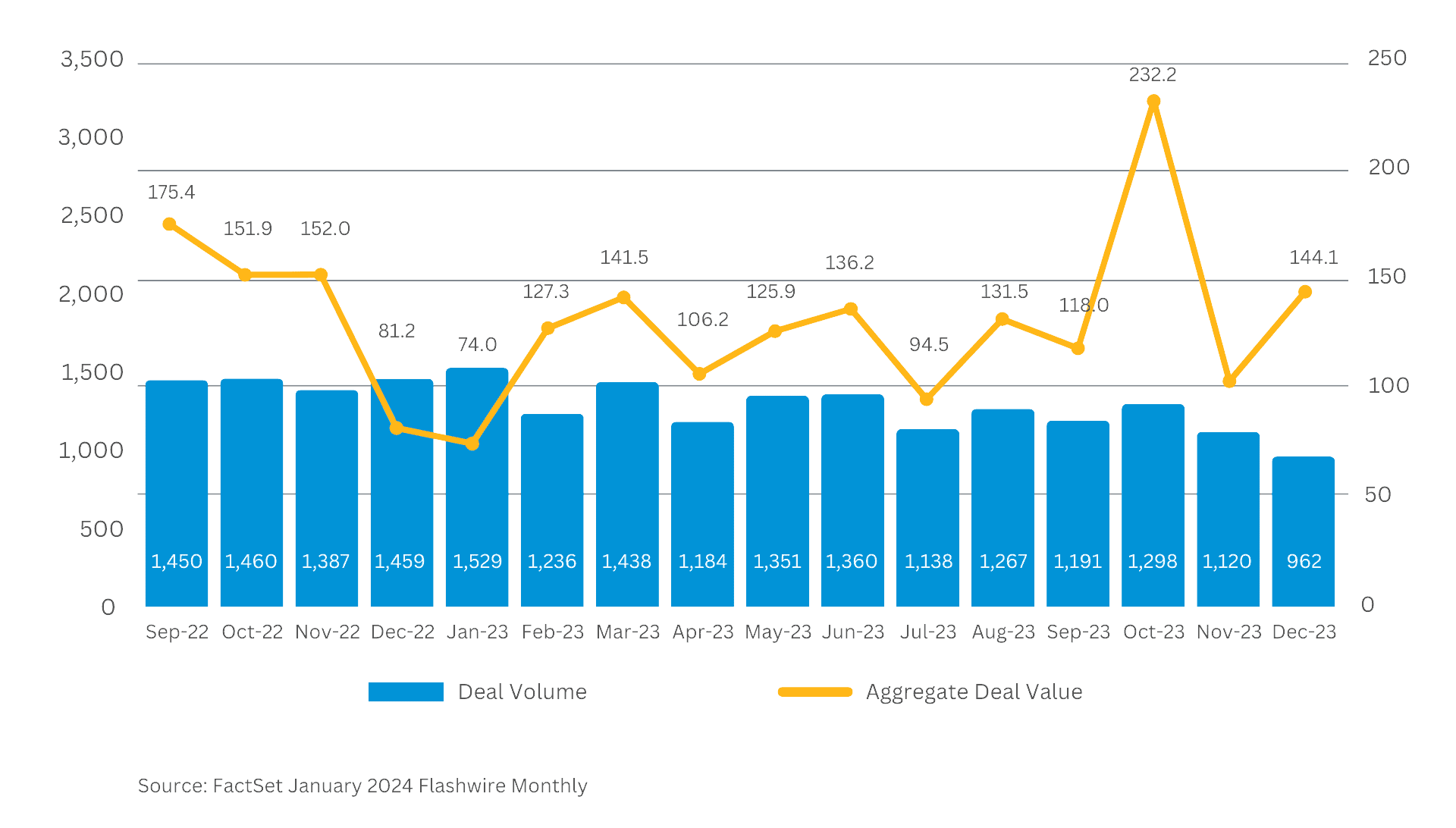
As you can see in the table below, M&A deal volumes for disclosed deals fell across the board, with some of the largest decreases in the middle market highlighted above. Additionally, aggregate transaction values fell in 2023 compared to 2022.
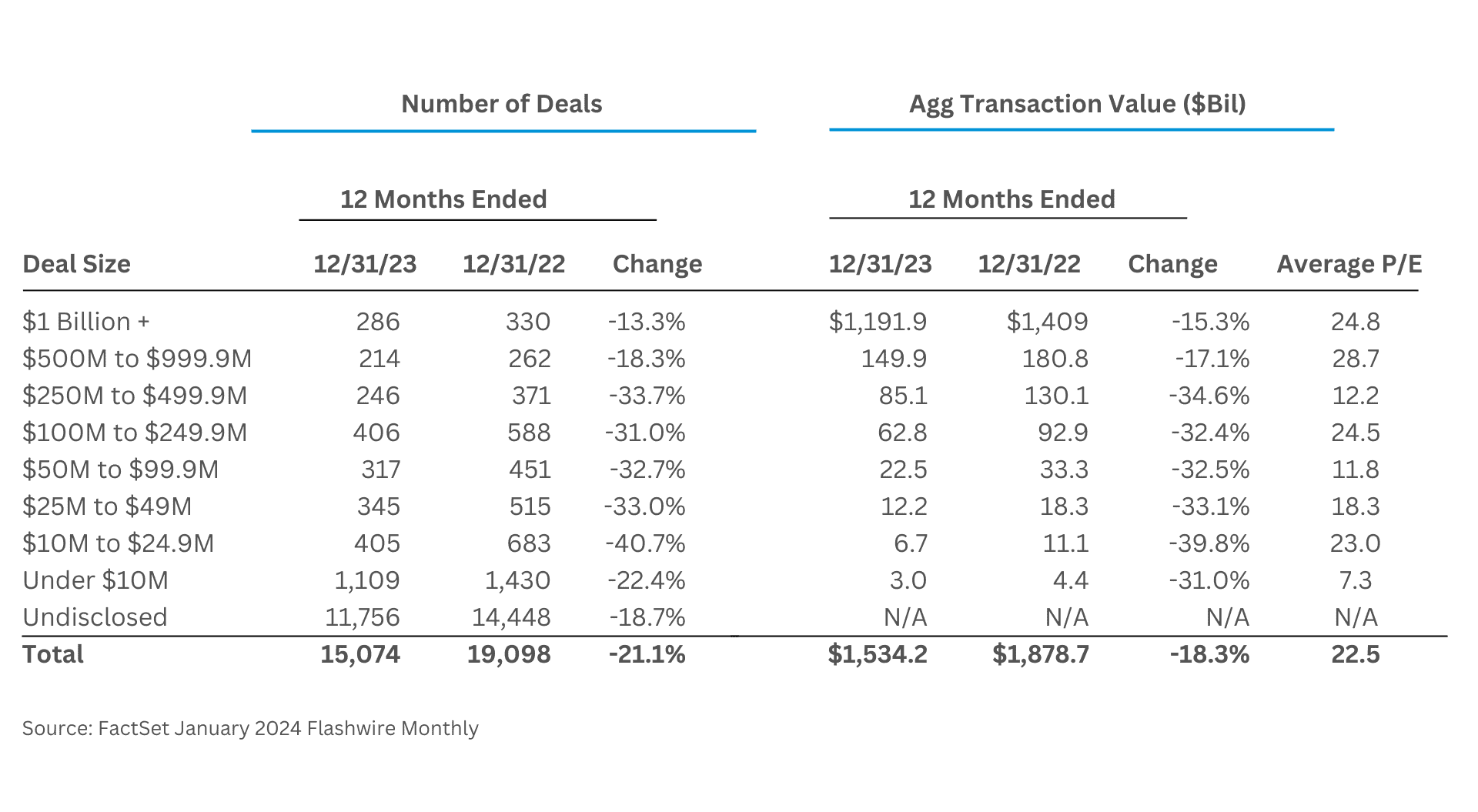
In our M&A update last year, we discussed quality middle market deals could still find a buyer. In other words, there is a “flight to quality,” or the movement in the market toward high quality assets or companies during times of volatility or uncertainty. In other words, our belief continues to be that quality deals, which in turn imply quality companies, will always find a market, and achieve market or above-market returns. During times of volatility or uncertainty, and when deal flow is low, these quality deals shine even brighter. We believe this is especially true for M&A in the middle market and lower middle market. You can see from the Chart 2 below, multiples started to trend down from the end of 2022 to its lowest level at the end of 2nd quarter 2023, but once the Federal Reserve stopped raising interest rates in July 2023, multiples pushed higher, and deal volumes started to increase. Further, you can also see the median deal premium in Chart 3 was much higher in 2023 vs 2022 and over 20% higher than 4Q2021.
Chart 2: Median EV/EBITDA
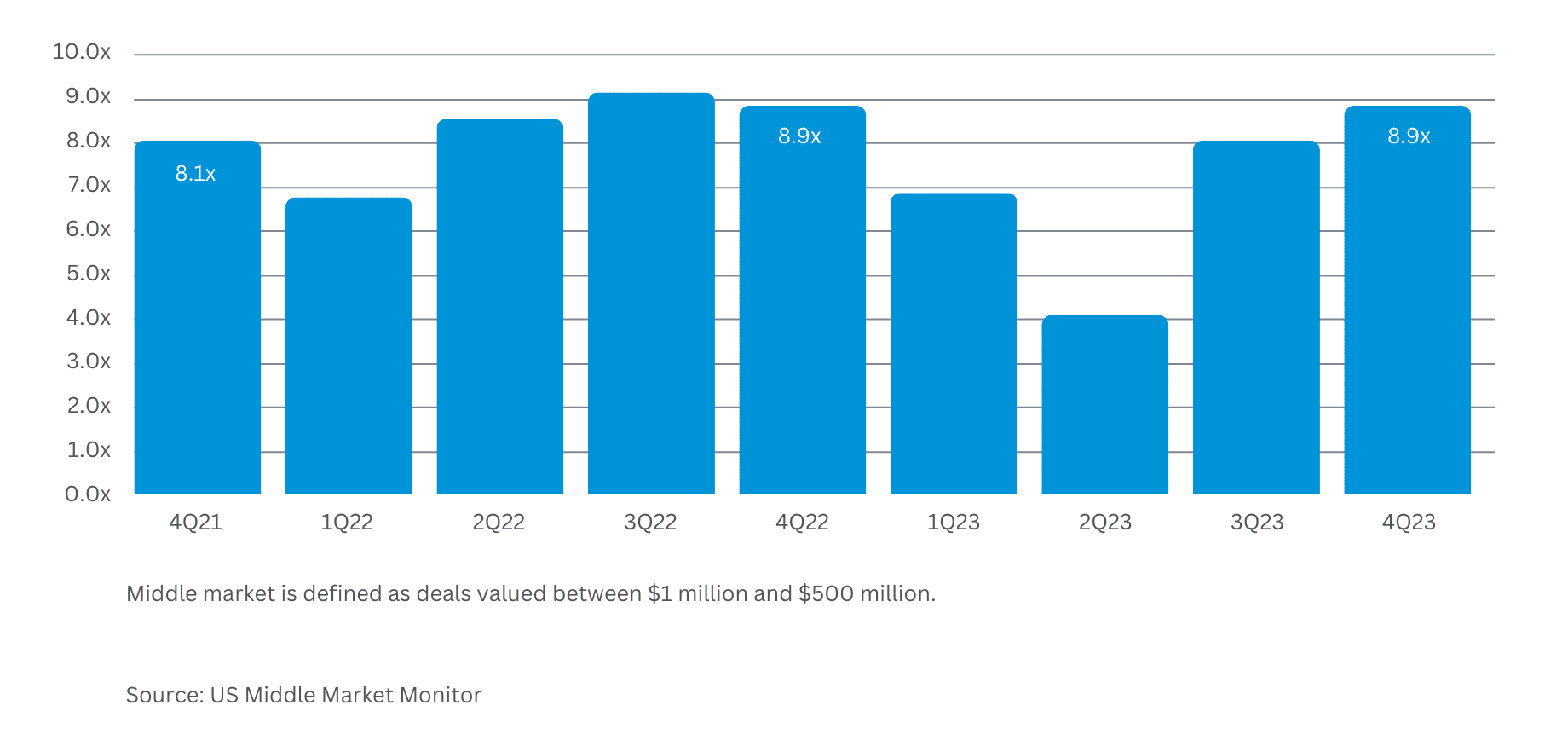
Chart 3: Median Premium

The Federal Reserve, Interest Rates, and the Proverbial “Soft Landing”
When the Federal Reserve stopped raising interest rates in July of 2023, this implied the worst was now over, signaling a semblance of stability. Similarly, by the end of the second quarter of 2023, inflation had fallen from 9.1% a year earlier down to 3% as of June 2023. Inflation for goods and services was not the only concern for the Federal Reserve; it was also concerned about wage inflation. During the second half of 2023, the US added 216,000 jobs in December 2023 and another 353,000 in January 2024. Although this is robust job growth, wage inflation has not increased and, in fact, has decreased as measured by the Bureau of Labor Statistics.
Chart 4: Three-month percent change, seasonally adjusted, civilian workers, total compensation
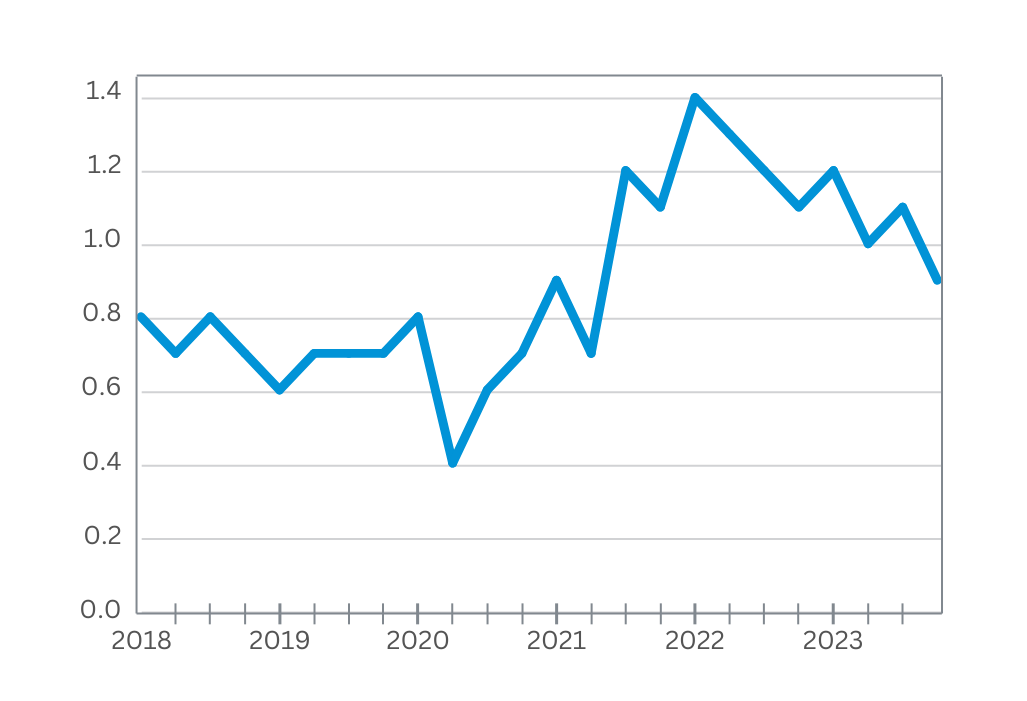
Chart 5: Twelve-month percent change not seasonally adjusted, civilian workers

So, where do we stand in the fight against inflation? In Chart 6, we can see inflation has come down significantly to 3.4% since the peak of 9.1% in June 2022. Keep in mind, inflation is measured on the left axis and the fed funds rate on the right axis. The actions of the Federal Reserve cut inflation almost in half. Meanwhile, the fed funds rate appears to have plateaued at 5.25-5.50%. The Federal Reserve now has ample ammunition with their ability to stimulate the US economy with interest rate cuts, bring the US economy in for a “soft landing,” or, at a minimum, mitigate the impact of a recession should one materialize. Keep in mind the Federal Reserve increased interest rates not simply to fight inflation but to prevent or mitigate a potential recession.
Chart 6: Inflation versus Fed Funds Rate
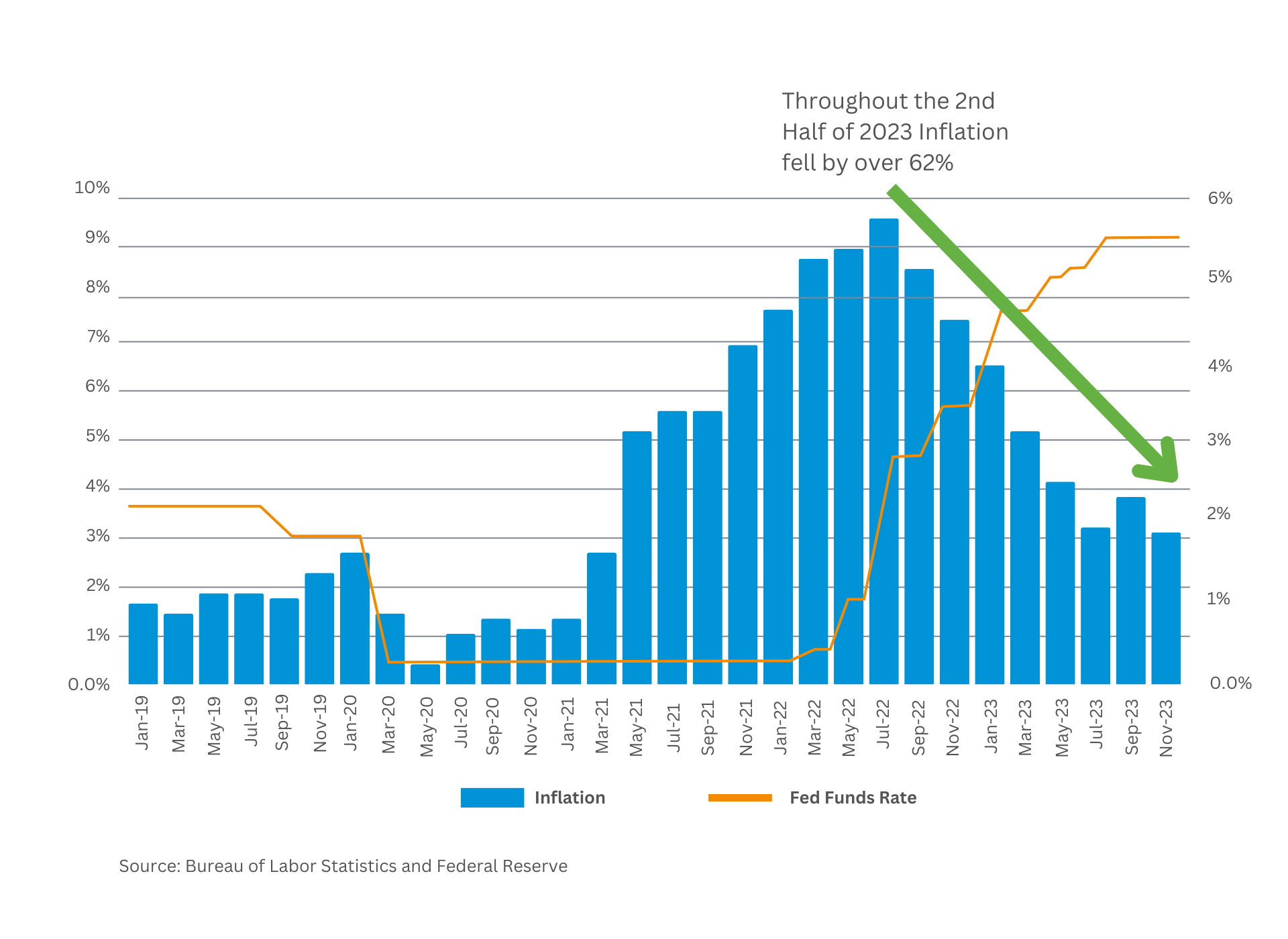
Chart 7: US Unemployment Rate
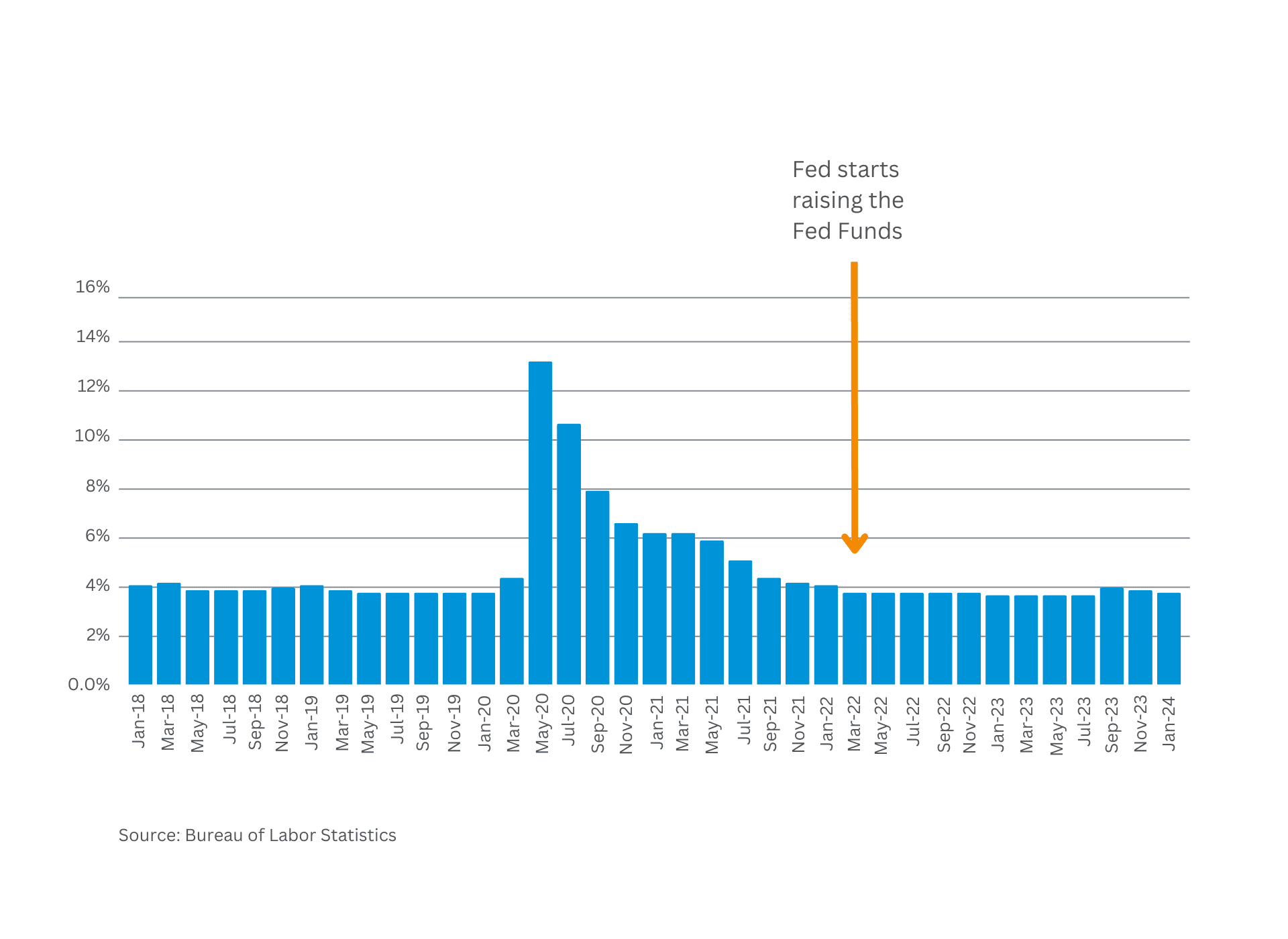
So, did we get a “soft landing”? Or are we headed for a recession? The definition of a soft landing is when the Federal Reserve raises interest rates to combat inflation without causing higher unemployment, negative GDP, and a recession. Unemployment is still down at near historic lows at 3.7% as of December 2023, but the Federal Reserve would like to see it even lower. Although GDP spiked to 4.9% in 3Q 2023 (not a good thing when the Federal Reserve is trying to fight inflationary pressures), GDP moderated down to 3.3% in 4Q 2023. Again, the Federal Reserve would like to see it lower.
Chart 8: Annualized GDP

Furthermore, a recent survey conducted by the Conference Board in collaboration with The Business Council showed improvement in the Measure of CEO Confidence™ to 53 in Q1 2024. Although the survey indicates recession is the number one concern for CEOs surveyed, this is the first time in the past two years the survey reading reflects more positive than negative responses. This survey would indicate we are not out of the woods but headed in the right direction.
How Long Will Interest Rates Stay High?
Many have asked if the current “high” interest rate environment is here to stay. Will the Federal Reserve reduce interest rates as indicated in the December 2023 FOMC meeting? Or, are the days of single-digit interest rates for debt financing for M&A deals gone? It depends on what happens in the overall economy, especially what happens to inflation and unemployment. The Federal Reserve may delay lowering the fed funds rate if inflation starts to tick up. In their January 31, 2024 press release, the Federal Reserve stated, “The Committee does not expect it will be appropriate to reduce the target range until it has gained greater confidence that inflation is moving sustainably toward 2 percent.”
Will M&A market participants wait until the Federal Reserve reduces interest rates? Or will market participants take the current stability as something they can count on, readjust their return profiles, and implement new deal structures? Anecdotally, toward the end of 2023, we saw deal structures for invested capital begin to adjust to the higher interest rate environment. Several models showed extended holding periods and preferred return on invested equity capital for private equity deals, which required a higher coupon than the traditional 8%. If debt was used to fund middle market M&A deals, the interest rates were much higher than two years ago. In 2023, debt financing for more significant M&A deals was few and far between. If the Federal Reserve is not in a rush to lower interest rates, we may see a shift to a “new normal” as we see signs that market participants are adjusting.
Chart 9: FOMC participants’ assessments of appropriate monetary policy: Midpoint of target range or target level for the federal funds rate
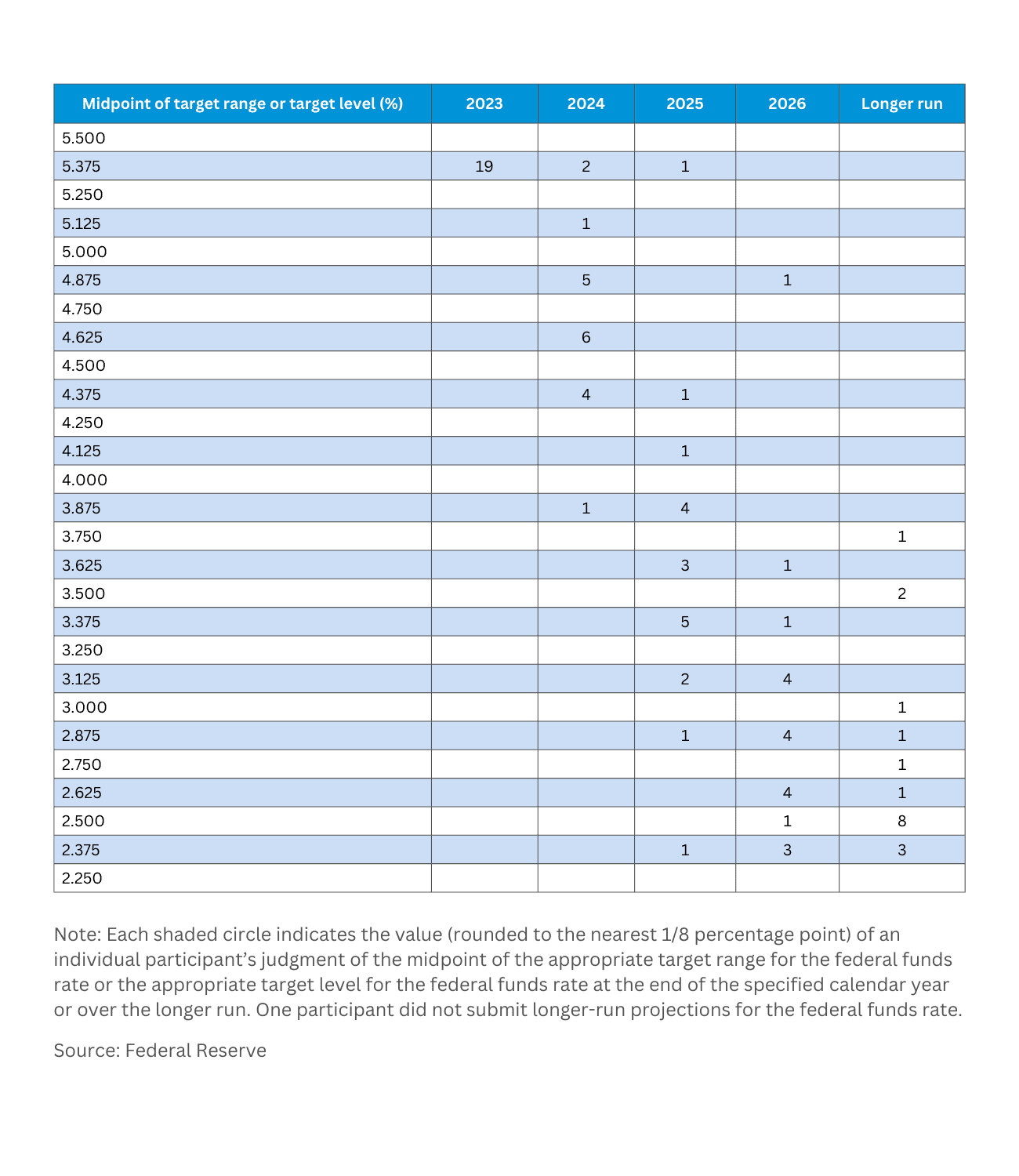
After its December 2023 FOMC meeting, the Federal Reserve forecasted it would make three quarter-point cuts by the end of 2024, implying lowering the benchmark fed funds rate to 4.5%–4.75%. In this December meeting, the FOMC also provided a forecast of the target range for the fed funds rate from 2023 through 2026. As you can see in Chart 9, a majority of the FOMC participants believe the fed funds rate will be below 5% sometime during 2024. For 2024 through 2026, the FOMC forecasted a steady decrease in the fed funds rate, marching the benchmark rate downward below 4%, and some FOMC participants believe it may go below 3%. However, this can all change if inflation does not continue to fall towards 2%. If inflation stays flat, the Federal Reserve may likely keep interest rates where they are. If inflation starts to inch upward, the Federal Reserve may reverse its current stance on interest rates.
Are We Out of the Woods Yet?
In the US, the economic outlook appears more positive at the start of 2024 compared to a year ago, and all signs appear to point to more M&A activity in 2024 versus 2023. The possibility of lower interest rates, stable GDP growth, low unemployment, and lower inflation show positive trends and would likely, in turn, positively impact the velocity of M&A deals in the US.
However, 2024 is not without its challenges. The 2024 election year appears to be one of the most contested presidential elections since the last presidential election. Along with a presidential election year come promises from candidates of reform, change, and a better tomorrow for all Americans. In 2021, we saw the possibility of tax reform pushed M&A deals forward at a tremendous rate. By all accounts, 2021 was one of the most active markets for M&A deals in decades due to the specter of tax reform as well as M&A deals scheduled to close in 2020 that were pushed into 2021 because of the COVID shutdown. Are we going to see an increase in the number of M&A deals in 2024 at levels similar or better than in 2021? Probably not. However, it appears M&A activity for 2024 is poised to be better than 2023.
Also, let’s not forget there is a ton of dry powder looking for M&A deals. According to S&P Global, there is over $2.59 trillion of dry powder globally. Other sources have stated there is over $1 trillion of dry powder in US alone earmarked for the acquisition of M&A deals.
Other considerations that may impact M&A deals in 2024 are the various geopolitical risks throughout the world today, like the Russia–Ukraine War and Gaza–Israel conflict which have been major concerns since they started. Further, there are still ongoing unresolved conflicts between the US and China over trade tensions, tariffs, and the militarization in the South China Sea. Although these conflicts may seem very distant from US Middle Market M&A, there can have an impact on the overall US economy.
Contact Us
Calvetti Ferguson works with middle-market companies, private equity firms, and high-net-worth individuals nationwide. Regardless of the complexity of the compliance, assurance, advisory, or accounting need, our team is ready to help you. Please complete the form below, and we will follow up with you shortly.

